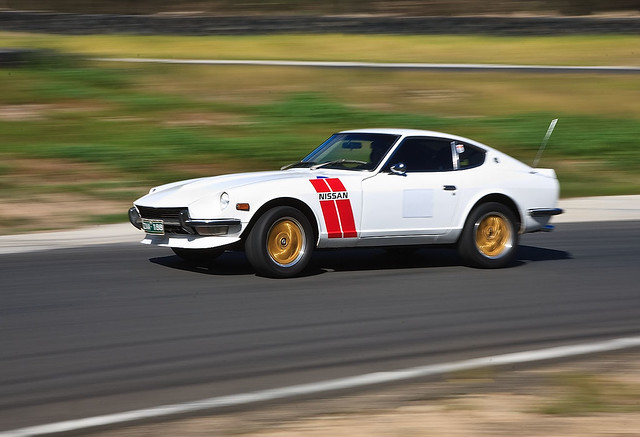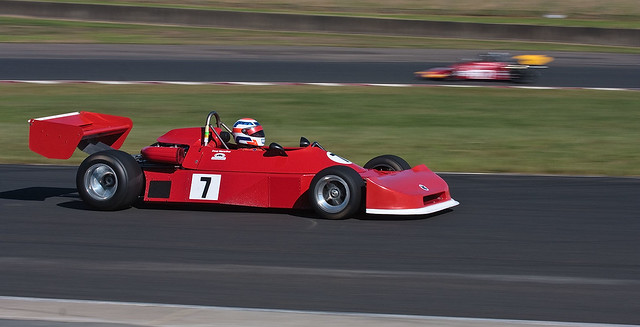This is from a tutorial of mine (on another site) - The whole thread can be seen here.
http://digital-photography-school.com/forum/tutorials/121859-panning-motor-sport.html
It mostly relates to motor sport howver the same principals apply.
In the thread there are some others post (not all mine) with some more suggestions.
Depending on the lens you are using, your shutter speed, and the distance to the subject you may find a monopd may help. In daylight I don't normally use one.
-----------------------------------
This is my first tutorial for DPS.
I shoot a fair amount of motor sort, including panning. Similar principals apply to panning other subjects.
Try to position yourself so you have a "clean" background, or at the very least you can crop any "mess" out. It also helps if you can be relatively parallel to the track either horizontally or vertically.
It takes practice and if your shooting position changes or the subject speed changes then it is almost like starting again.
I normally set the camera up so:
Centre focus point only active.
Focus tracking is on.
Shutter priority and Shutter set to:
For racing cars I normall start at 1/125 second.
For racing motor cycles it will be 1/250 second.
For slow shuttter speed speed panning it will be 1/30 second.
I let the aperture, up to a point, take care of itself as the background will be nicely blurred anyway.
I always shoot hand held when panning, and if I am using an image stabilised lens it will set to panning mode.
As a car passes I will partially depress the shutter, to allow the focus to lock on, and I will take a series (sometimes a burst) of photographs whilst smoothly tracking the vehicle and following through. I will usually have one good pic out of the series.
Depending on the results I may go up or down with the shutter speed.
It takes practice and if your shooting position changes or the subject speed changes then it is almost like starting again.
Some examples:
(1) Slow shutter speed panning (1/30 second)
 Z Car
Z Car by
dicktay2000, on Flickr
Camera: Canon EOS 5D
Exposure: 0.033 sec (1/30)
Aperture: f/20.0
Focal Length: 67 mm
ISO Speed: 50
Exposure Bias: -2/3 EV
(2) A bit faster (1/200 second). Looking down helps keep the background clean.
 IMG_7824
IMG_7824 by
dicktay2000, on Flickr
Camera: Canon EOS 40D
Exposure: 0.005 sec (1/200)
Aperture: f/13
Focal Length: 210 mm
ISO Speed: 400
Exposure Bias: 0 EV
(3) You don't always have to fill the frame with the car.
 #7 Doug Macarthur 1977 Ralt RT1
#7 Doug Macarthur 1977 Ralt RT1 by
dicktay2000, on Flickr
Camera: Canon EOS 40D
Exposure: 0.008 sec (1/125)
Aperture: f/14.0
Focal Length: 100 mm
ISO Speed: 100
Exposure Bias: -1/3 EV
(4) Very ocassionally you will be lucky enough to get two cars/bikes together.
 IMG_7364
IMG_7364 by
dicktay2000, on Flickr
Camera: Canon EOS 40D
Exposure: 0.008 sec (1/125)
Aperture: f/10.0
Focal Length: 115 mm
ISO Speed: 100
Exposure Bias: -2/3 EV
Please feel free to ask questions or leave comments.
Thanks for looking.
Richard
=======================











